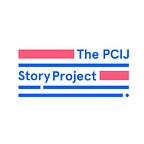12 New Ways to Tell True Stories
The PCIJ Story Project is an attempt to foster new forms of storytelling and accountability journalism not just for legacy news media but for other platforms.
Here are some storytelling formats that have been tried elsewhere and that we hope will encourage creative thinking about how to tell true stories in new ways.
- Animated illustrations can sometimes be more effective for telling stories than regular video. This story about sexual abuse in a home for the mentally disabled could not be told in the usual way because the victim and her family could not be named. Instead, the victim’s story was told in a video made from artist’s drawings of real people, places, and events.
2) Animated explainers help viewers understand complex issues. The International Consortium of Investigative Journalists explained how offshore tax havens work in this animation, Tax Havens 101.
3) Using cinematic techniques to tell journalistic stories can breathe fresh life into old, tired formats of doing public affairs television reporting. Filmmaker Laura Poitras’s Field of Vision has been experimenting with producing short, nonfiction films that allow filmmakers “to respond quickly, take creative risks, reach wide audiences, explore new ways of storytelling and make films with a faster production cycle.” This means no standups, more evocation than narration, and a point of view.
4) A fusion of photo, video and narration can be very compelling, as in the Associated Press story The Other Disappeared, which is about students abducted and still missing in the town of Iguala, Mexico. There’s numbers and data in the interactive story but they are presented in a simple, interesting way. The AP team also asked the students’ family members to pose with portraits of their missing relatives. Users click on each photo and get information about the missing student and the relative still searching for him or her.
They also put together excerpts from emotional interviews with the students’ mothers, video of the town, and photographs in a multimedia story that is guaranteed to make viewers cry.
5) Modeling, or building models to simulate real-life situations, can be a storytelling device. The Tampa Bay Tribune in Florida built a Lego model to explain what went wrong with a government plan to build a bridge. This post explains how that model was built.
6) Interactive games allow readers to engage with the material in new ways. This game commissioned by Al-Jazeera places users in the role of an investigative journalist uncovering the story of illegal fishing operations off the coast of Sierra Leone.
7) The graphic novel as an art form works for journalism, too. The Center for Investigative Reporting in California used the graphic novel format for Techsploitation, an online story about exploitation in the tech industry.
8) Songs can help make abstract concepts more digestible. As part of a series of redistricting in the U.S., the nonprofit Pro Publica commissioned a song to explain how the boundaries of electoral districts are drawn so politicians or political parties can get maximum advantage.
9) Data in stories can be presented in novel ways. This Pro Publica graphicwent viral. It was part of a story on workers’ compensation for job-related injuries. The reporters gathered tons of data, but what they did was to look at how much compensation workers get for losing body parts.
Individual human stories can be told side-by-side with data, as in this Pro Publica story on mothers who died during childbirth.
10) The photo essay is an old format but it can be refreshed by find new angles in even old stories, as in this collection of photographs of the bedrooms of schoolchildren who died during the 2014 Sewol ferry disaster in South Korea. A Reuters photographer visited the students’ families and found some of them kept the bedrooms intact.
11) Editorial cartoons can also be refreshed, as Washington Post cartoonist Ann Telnaes has done, by animating her drawings to make them more shareable on social media platforms.
12) Oral history — the incorporation of large amounts of text from interviews — can be an effective way to tell stories from multiple points of view. Ginger Thompson of Pro Publica reconstructed a massacre in Mexicoby weaving in long excerpts from her interviews with dozens of eyewitnesses and other sources, into the story published by National Geographic.
